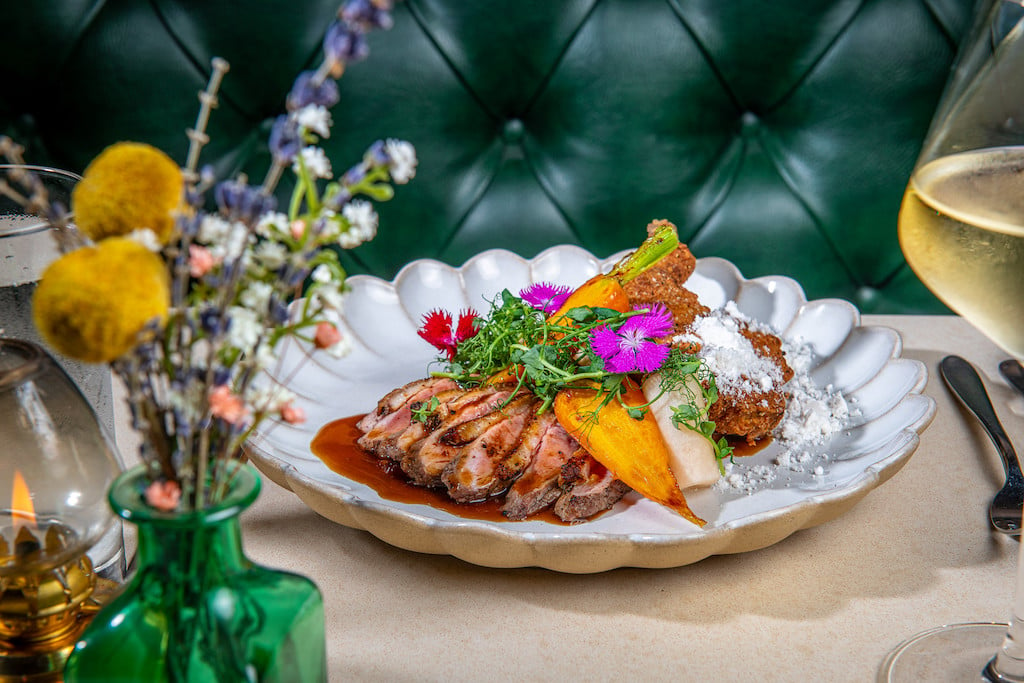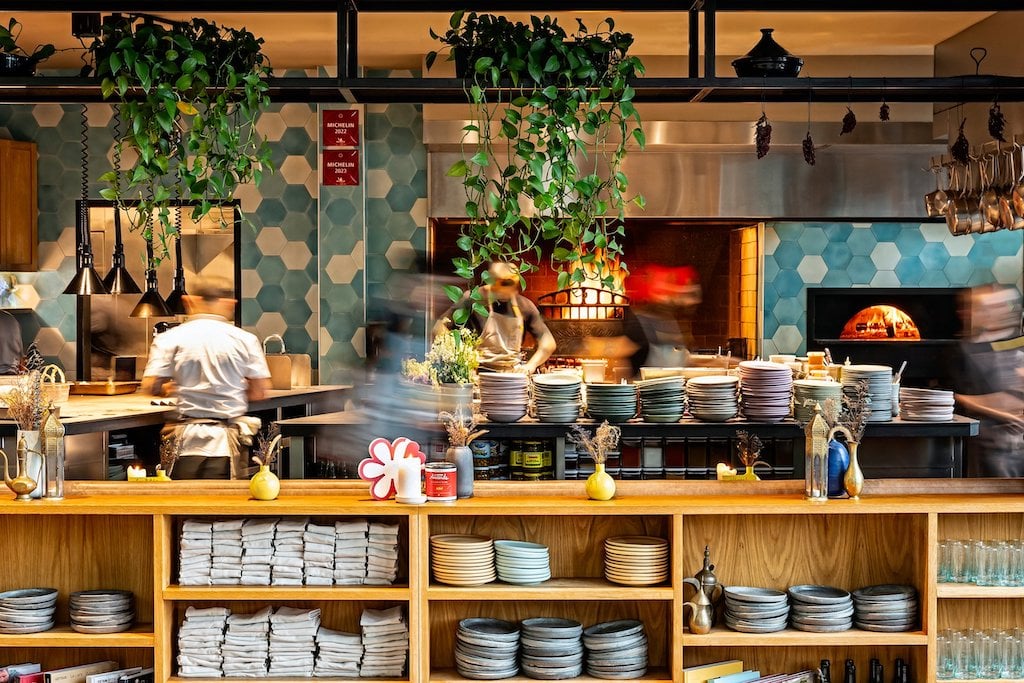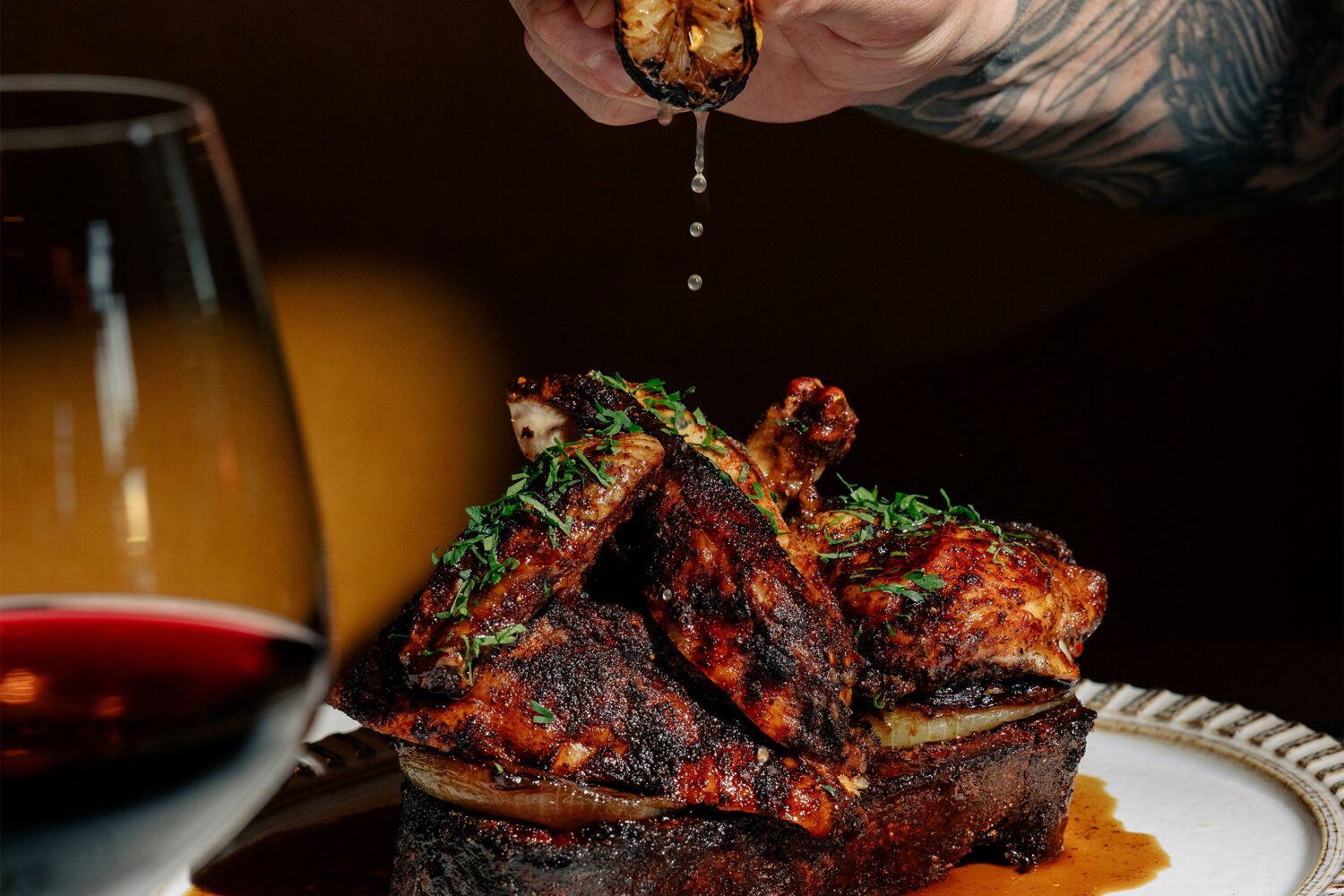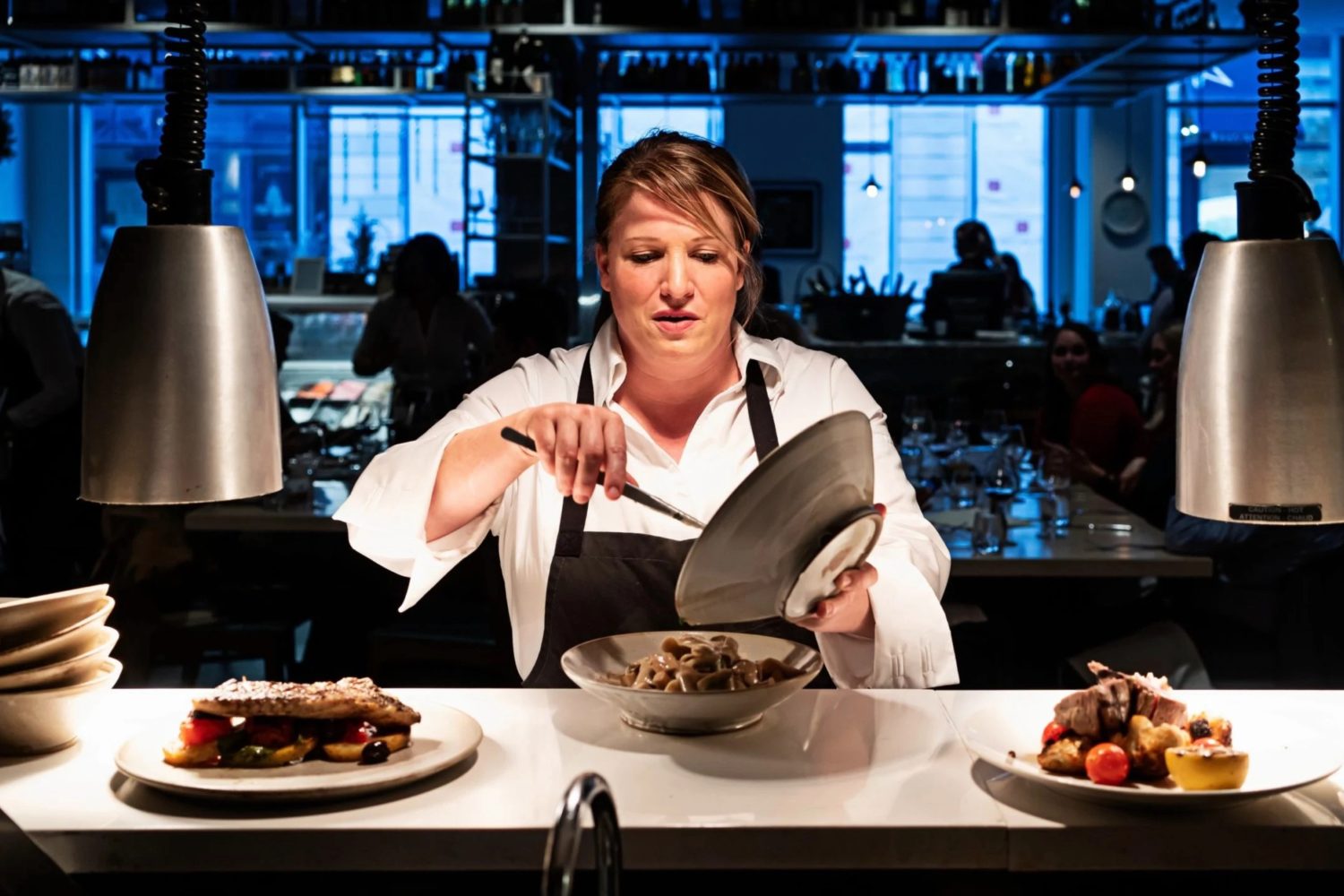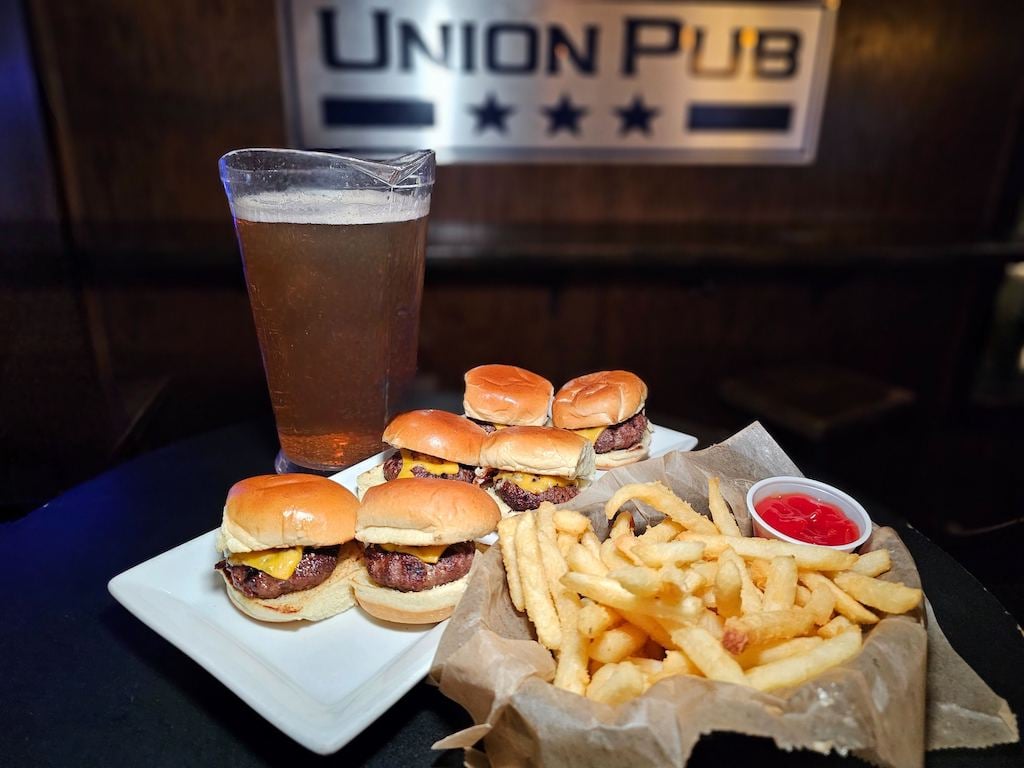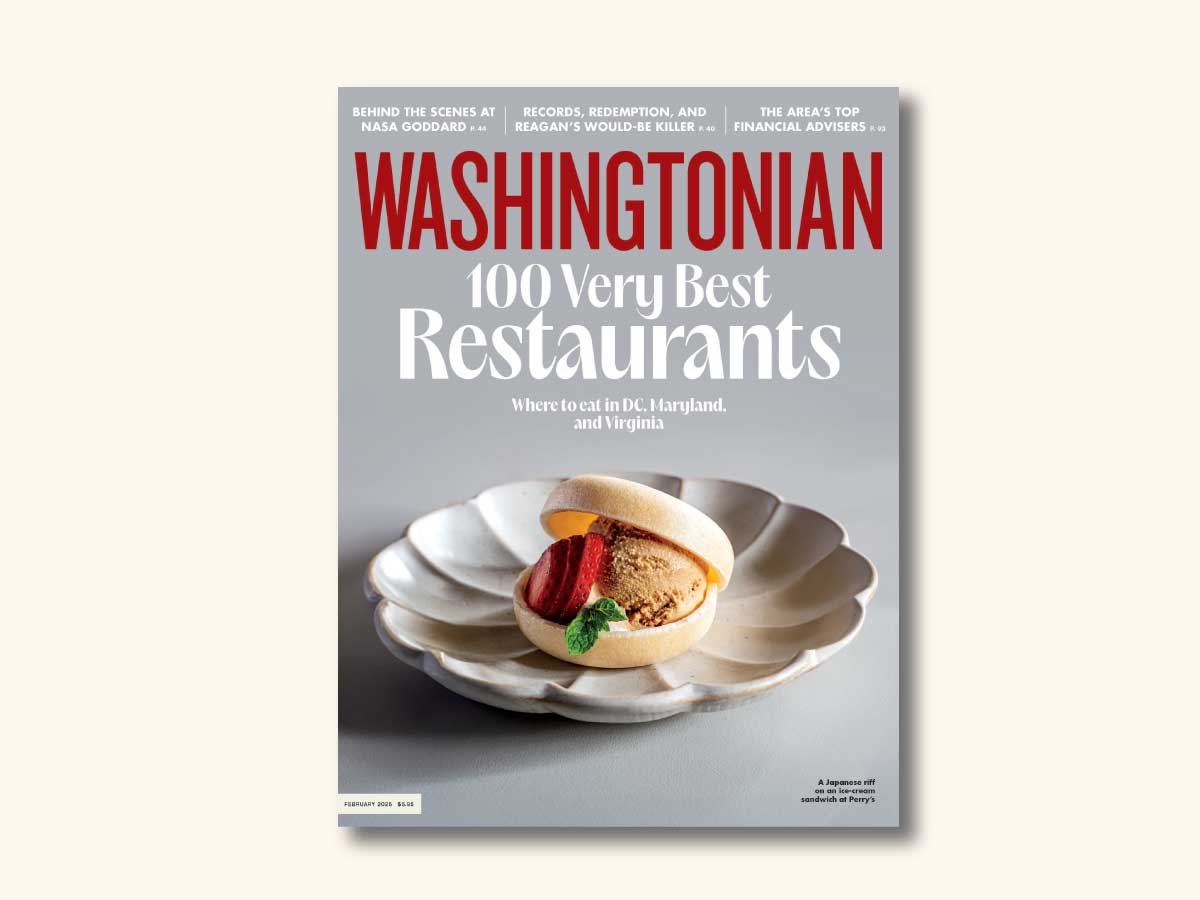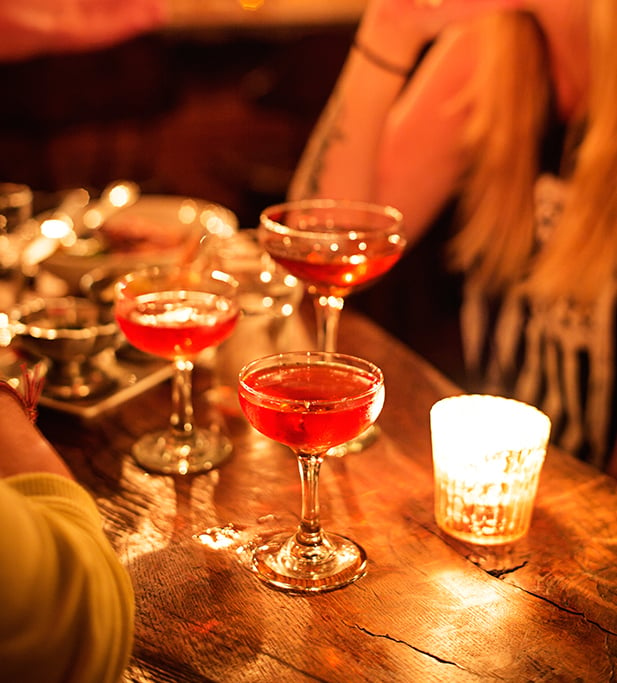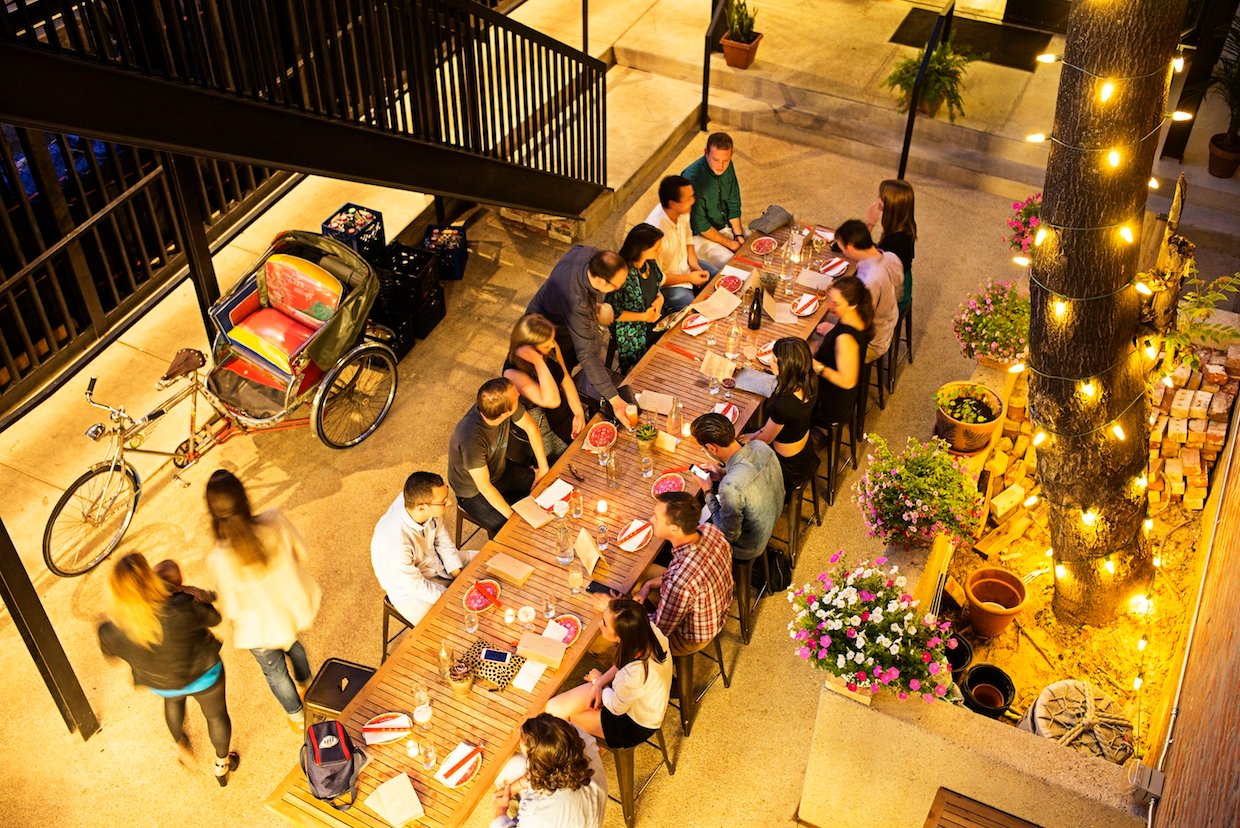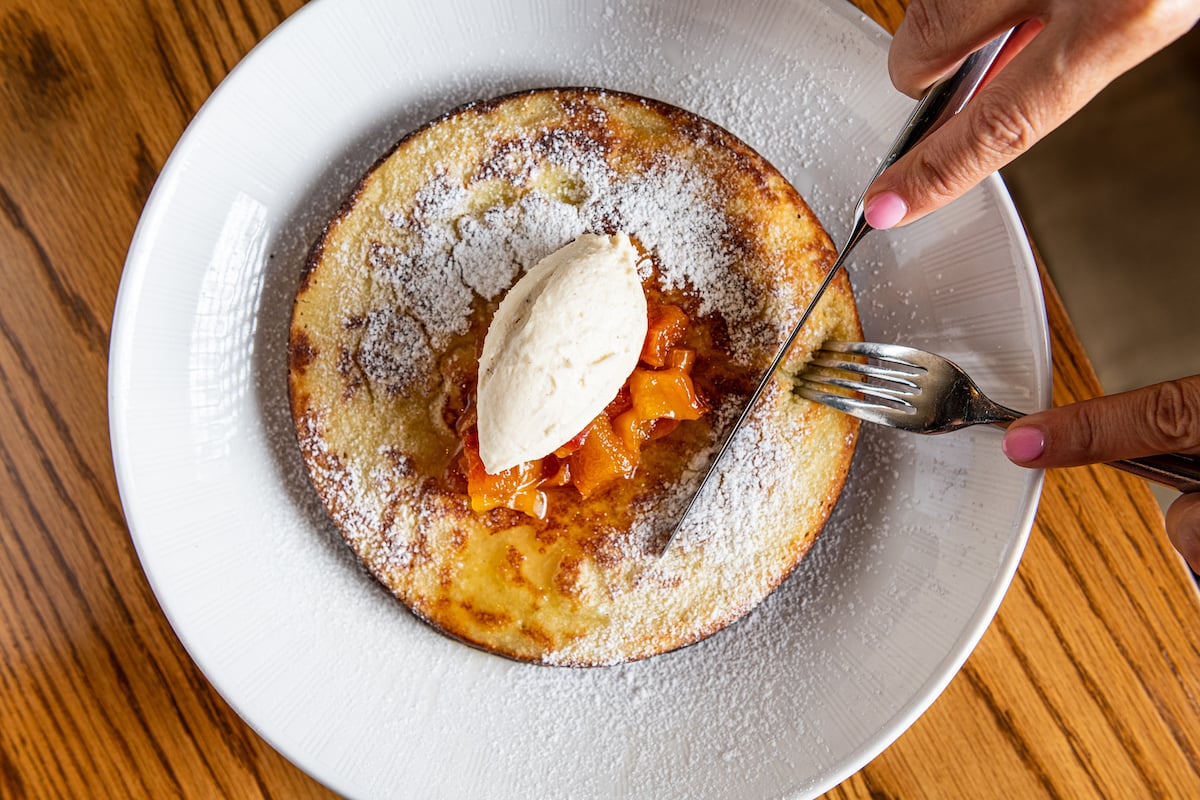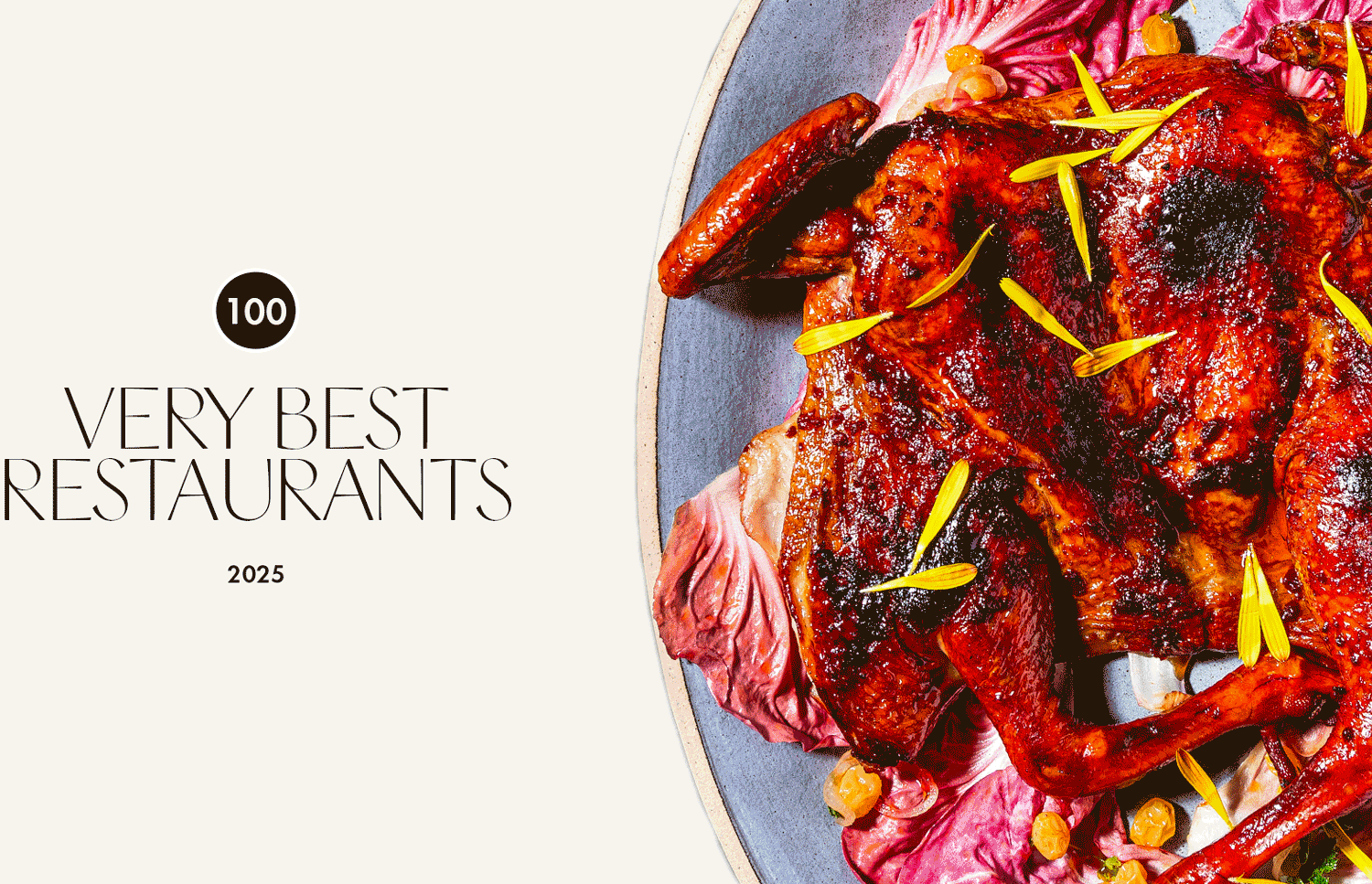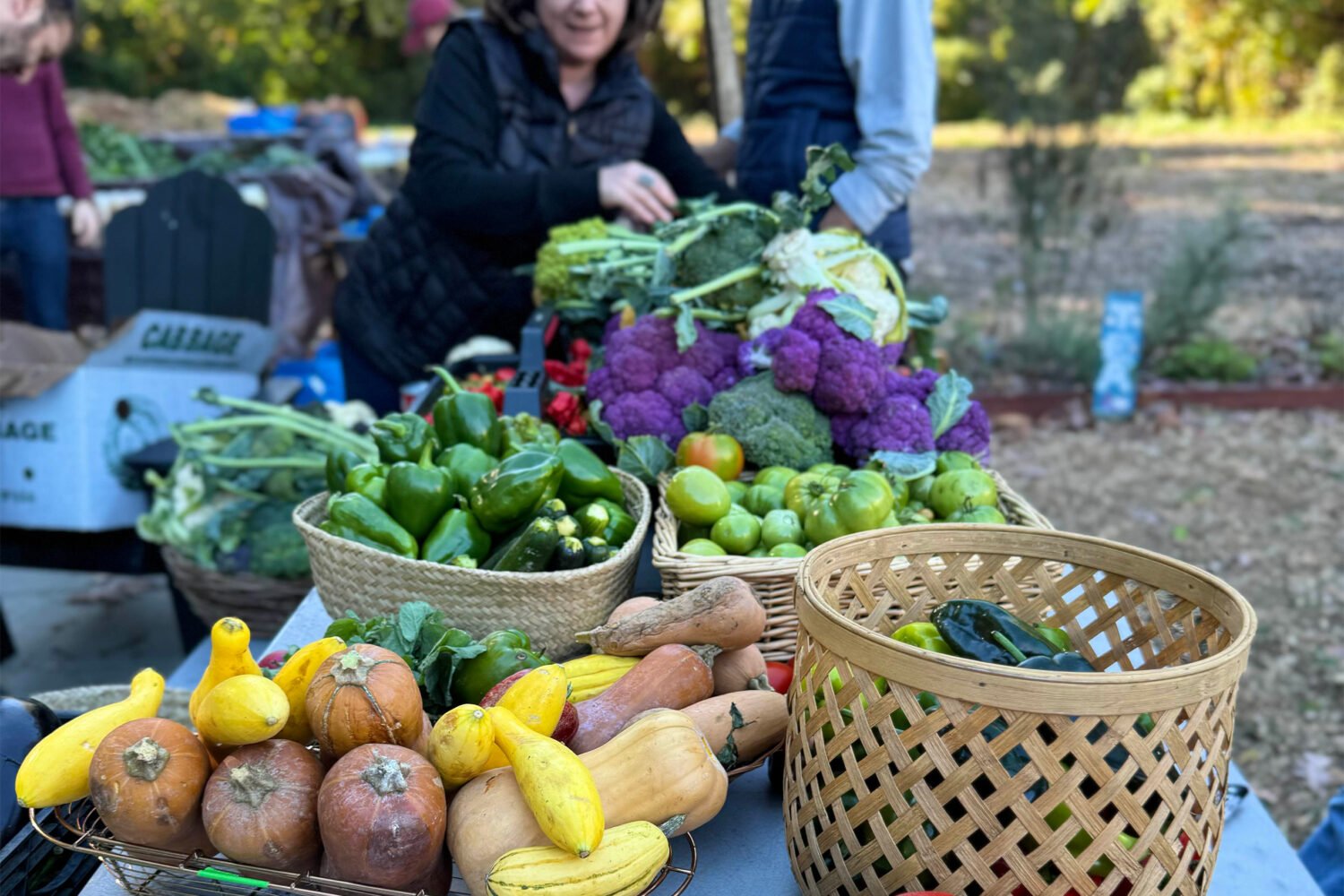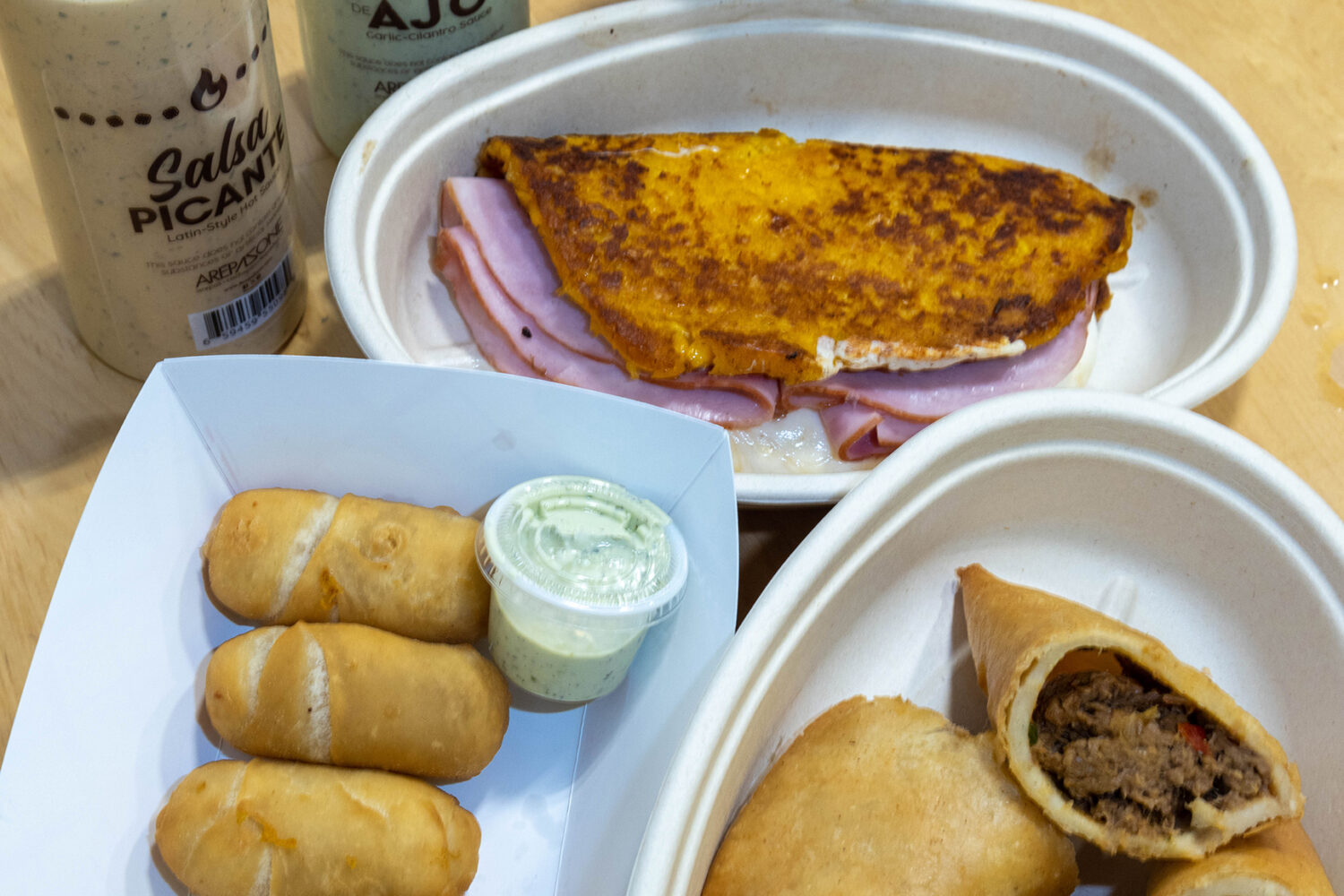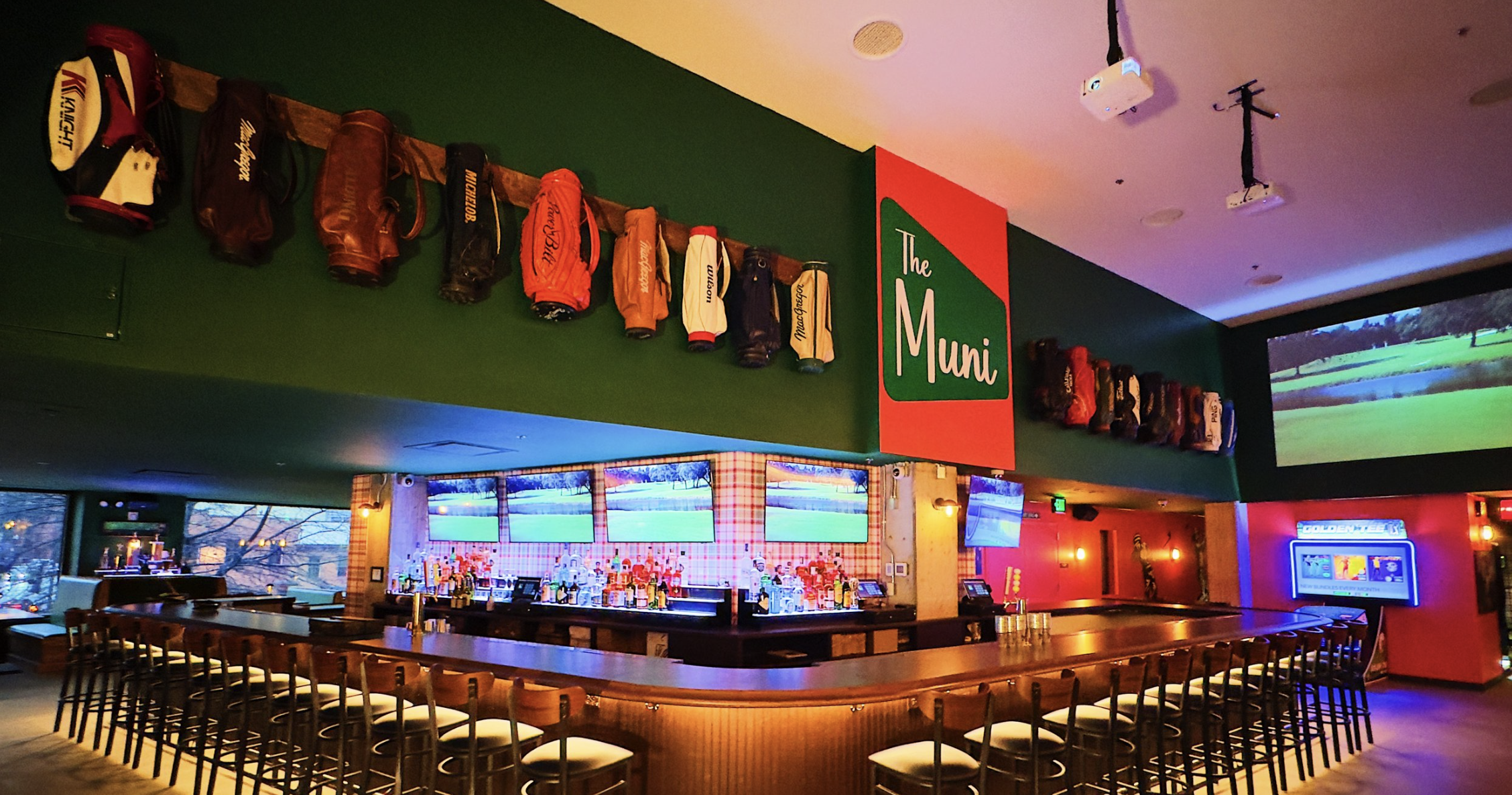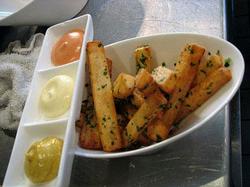
Photographs by Erin Zimmer.
In the just-released October issue of The Washingtonian, we’ve dissected Washington’s budding obsession with fancy French fries. At downtown DC’s Brasserie Beck, the fry-making process is labor-intensive. Before diners dunk those $7 orders of fries into chef Robert Wiedmaier’s house-made mayonnaises, the spuds have been washed, peeled, sliced, soaked and refrigerated overnight, dried, blanched, and finally fried. On average, Beck goes through 1,000 pounds of fries per week.
Here’s a behind-the-scenes look.
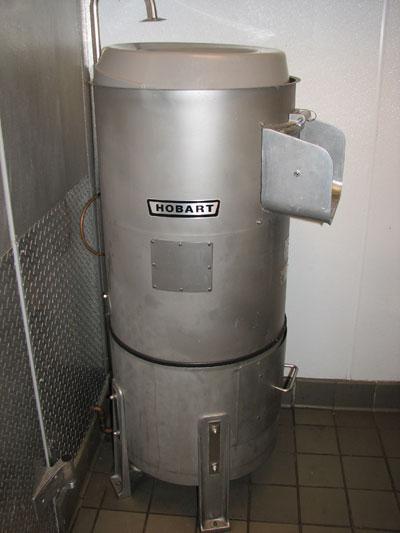
Raw potatoes, delivered to the restaurant in 50-pound boxes, get dumped into an “old-school” Hobart peeler—the first commercial brand on the market, introduced in 1928. Sandpaper inside the machine strips off potato skins.
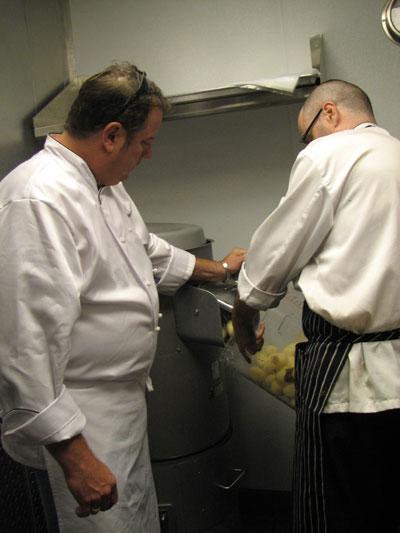
Chef/owner Robert Wiedmaier and chef de cuisine David Ashwell collect peeled spuds in a plastic bucket.
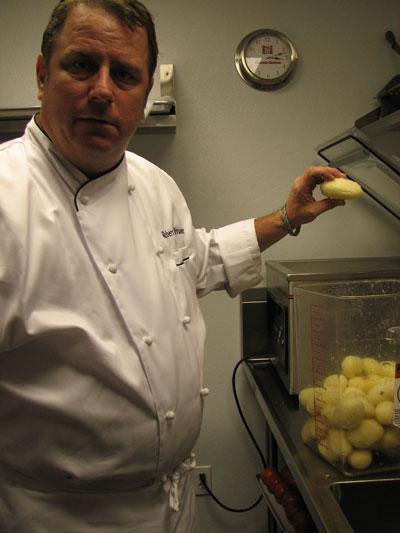
“See how smooth they are?” says Wiedmaier.
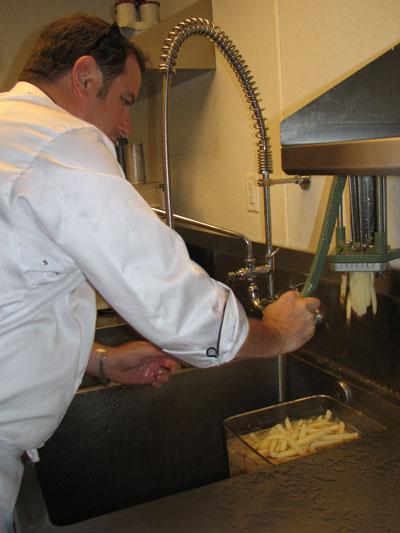
Each potato is individually sliced in a machine until the sink is full of raw fries. There are about ten fries in every potato. Then, the potatoes are soaked in the refrigerator overnight.
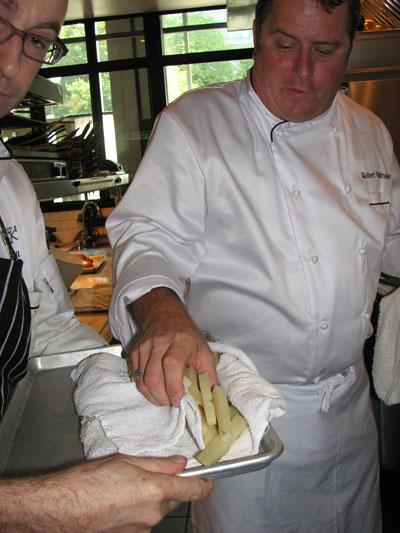
They’re towel-dried first thing the next morning.
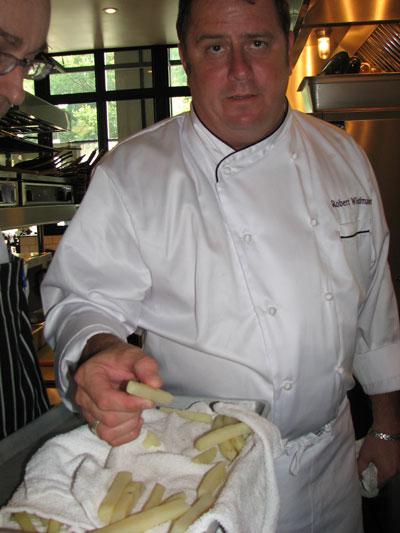
“See—they must be dry,” says Wiedmaier. “Soggy is the last thing you want in a fry.” Sometimes he even buys Simplot’s frozen brand because he’s that obsessive about avoiding sogginess. He’d rather have store-bought fries than wimpy ones that aren’t crisp.
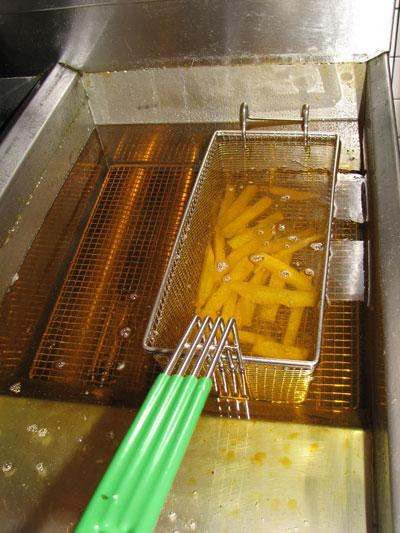
Still-raw fries get a first, four-minute dip—called a blanch—in grapeseed oil heated to 150 degrees. The goal for this step is a creamy, soft center, not a fry that’s totally cooked or brown. “We do this to get rid of sugar content,” says Wiedmaier. Sugar generates the dreaded sogginess.
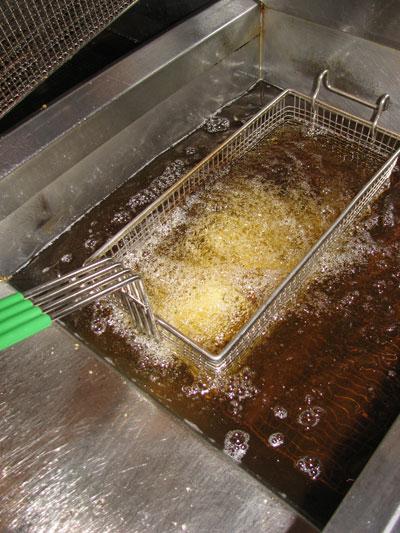
The grapeseed oil gets cranked up to 350 degrees for the frying stage. Six minutes later, the fries are golden brown. “Not yellow,” Wiedmaier points out. Some camps think yellow is best, but golden brown usually means good texture. Five fryers are kept going all night long.
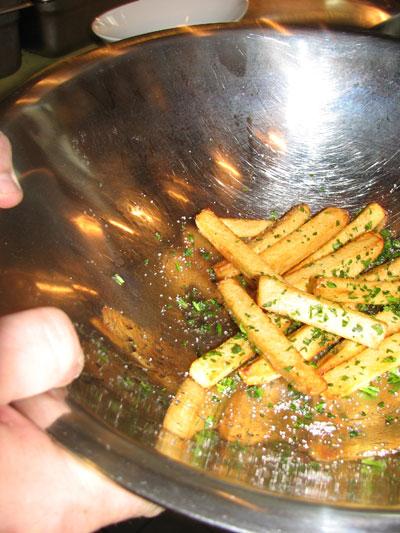
Maldon sea salt and parsley get tossed into the stainless-steel bowl.
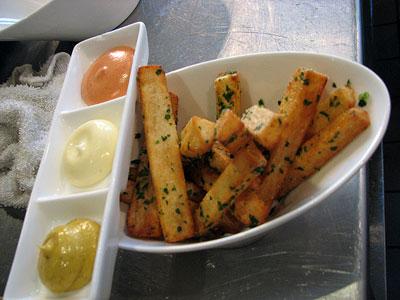
Ta-da! The fries are immediately plated and served. Wiedmaier loathes lukewarm spuds. To him, coffee, bread, and fries should always be served piping hot. Each bowl comes with his trio of house-made mayos: ketchup-infused (also known as Maria Rose sauce), curry-infused, and old-fashioned oil-and-egg-yolk.
Brasserie Beck also serves a “Beck It Up” version, a word-of-mouth exclusive in which fries are topped with melted Gruyère and applewood-smoked bacon.

